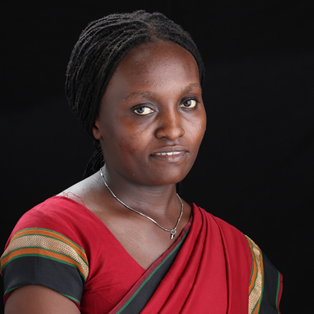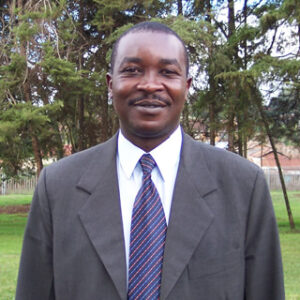
PHOTO: AATF.
By Dr. Canisius Kanangire
Two out of every three working people in Africa scratch the soil for sustenance and wealth. Agriculture employs 65 percent of the working population on the continent, accounting for 15 percent of gross domestic product and 40 percent of export earnings.
Africa’s agriculture is, however, dominated by smallholder farmers, who produce 70 percent of the food supply on an estimated 33 million farms. Despite recent progress, agriculture in Africa is characterised by low productivity. Now, more than ever, the sector is increasingly vulnerable to climate change, accelerated land degradation, and global market shocks, which expose farmers to food insecurity.
Farmers’ vulnerability is exacerbated by a lack of enabling environments, limited extension services, poor market access, limited financial support, and, crucially, low adoption and use of improved agricultural technologies.
Various countries have made major political commitments to improve agriculture on the continent such as the Maputo Declaration, the Malabo Declaration, the African Union’s Agenda 2063, and the UN Sustainable Development Goals. Beyond political commitment, there is a recognition that Agricultural technology can play a major role in developing a sustainable approach to intensifying production and realising the vision of a food and nutrition-secure Africa. Improving agricultural productivity in Africa is, therefore, key to economic growth and poverty reduction.
Experience from recent years has shown that improved access to agricultural technologies can enable farmers to sustainably boost productivity while reducing hunger and poverty.
During the last ten years, AATF has enhanced the capacity of 150 seed companies, resulting in the production of 70,000 metric tonnes of seed, which enabled some 178,000 farmers to access seed through the organisation’s commercialisation programme.
Some 3 million hectares of land were farmed with smart technologies, contributing to a 30 percent increase in farmers’ incomes.
The organisation has been a major driver of agriculture transformation on the continent through technology transfer. It has accessed 24 innovative and cutting-edge agricultural technologies worth over US$650 million, spread across 24 countries in Africa.
Research carried out in partnership with Africa-based institutions, governments, national agricultural research systems, and donors, has enabled farmers to adopt improved technologies. The results speak for themselves: In the past five years, some 4.8 million smallholder farmers have been reached with the foundation’s interventions.
Several agricultural goals have been set for Africa. The African Union’s continental goal for increasing agricultural yields is outlined in the Malabo Declaration on Accelerated Agricultural Growth and Transformation for Shared Prosperity and Improved Livelihoods.
One of the key targets set in the Malabo Declaration is to achieve a 6 percent annual growth rate in agricultural productivity and yields by 2025. This includes increasing the production of key crops, such as maize, rice, wheat, cassava, and sorghum.
“Technological advancements in agriculture provide vast potential for farmers, entrepreneurs, and investors to improve the productivity and efficiency of agriculture in Africa at a time when numerous factors, such as population growth and climate change, threaten food security’”
-Dr. Canisius Kanangire, Executive Director, AATF
AATF targets to reach 8 million farmers directly with agricultural technologies — with 45 per cent being women and 15 per cent youth. The intensified gender focus ensures that the choice of technologies takes into consideration the special needs of women and youth by enhancing their access to resources, agribusiness opportunities and technology.
Building on past work on biotech and conventional technologies that address the needs of farmers in Africa, there is now an urgent need to diversify agricultural technologies and expand the frontiers for next-generation (NextGen) products in Africa, while exploring the use of innovative technologies to improve the productivity prospects of strategic crops, such as soybean, whose market opportunities are on an upward trend. NextGen products are innovations being developed by improving existing technologies to effectively addressing the many challenges faced by African farmers due to emerging challenges in the region.
It is well known that technology access and delivery requires a functional enabling environment pegged on science based policies, laws, regulations, institutions and systems that facilitate adoption of technologies. The other aspects include sufficient awareness and capacity development, information sharing and collaboration. For the uptake of agricultural technologies to expand across the continent, thereby creating a receptive environment for the testing and adoption of biotechnologies, more people have to be reached through campaigns to raise awareness through advocacy, communication outreach and digital, policy and regulatory interventions.
Providing technology-based education is critical for transformative growth. Data-driven processes and analytics can strengthen information sharing while encouraging farmers to adopt new inputs and good agricultural practices.
Greater emphasis needs to be placed on enhancing commercialisation and scaling of agricultural technologies, with a key focus on getting recently approved biotechnology products to market by fast-tracking testing and approval of products emanating from innovations such as biotechnology to ensure real-time benefit for farmers. This means effective deployment and commercialisation of technologies will require the involvement of private sector players to ensure sustainability of the products in the market. This will ease access by farmers and consumers towards ensuring food and nutrition security on the continent.
Experts agree that effective and efficient commercialisation of new technologies requires a better understanding of country agri-food systems, closer coordination with partners, and a stronger in-country presence for better country-specific alignment between needs/challenges and development programs by government and other entities. It is, therefore, more appropriate that a country-centric approach is adopted to accelerate and improve the development and commercialisation of new technologies.
New opportunities for climate change mitigation and adaptation should be identified and seized by supporting climate-smart agricultural innovations and related policy interventions to enhance farmers’ resilience. There is also need to promote nutrition integration strategies to facilitate dietary diversity goals, while providing access to nutrition enhancement technologies such as biofortified crops and food fortification to improve nutrition for farmers and consumers on the continent.
Feeding Africa’s ever-bulging population and growing their wealth will require a sustainable boost toward productivity to reduce hunger and poverty and build wealth and health. Agricultural technology has proven it plays a major role in realisation of the vision of a food and nutrition-secure Africa. Improving access to agricultural technologies is therefore key in this endeavour.
The writer is the AATF Executive Director.



















































































